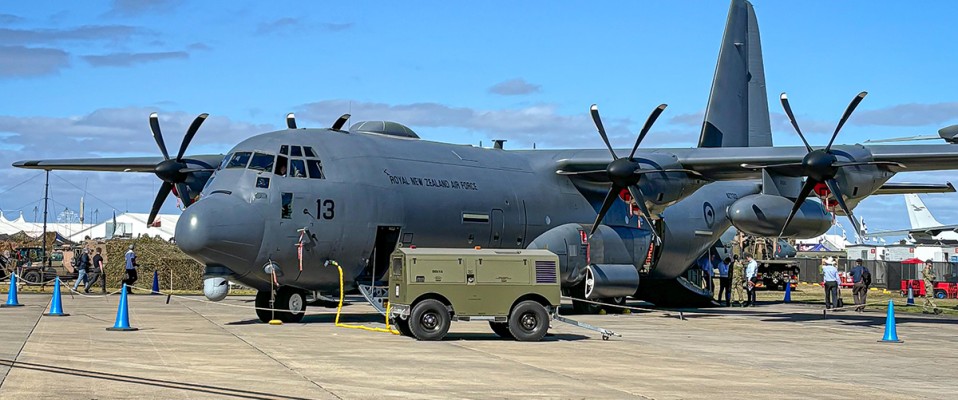New Zealand Defence Force releases it’s Defence Capability Plan.
RNZAF to acquire new Unmanned Aerial System ISR platform, as announcements for ageing aircraft to be replaced.
Article: Jaryd Stock
Images: Ryan Imeson, Gareth Ruhe and NZDF.
The New Zealand Government today released a multi-billion dollar Defence Capability Paper (DCP) to outline its plans for a modern, combat-capable New Zealand Defence Force (NZDF) that pulls its weight internationally and domestically.
“Global tensions are increasing rapidly, and New Zealand has stepped up on the world stage, but our current Defence spending is simply too low,” Prime Minister Christopher Luxon says.
“This new Defence Capability Plan contains $12 billion of funding over the next four years, which includes $9 billion of new spending. This will raise New Zealand’s defence spending from just over one per cent of GDP to more than two per cent in the next eight years.
“This blueprint has been designed with a 15-year horizon but deliberately focuses on critical investments needed in the next four years to ensure our Defence Force can adapt as the world around us changes.
“The Government has committed to reviewing the plan every two years. Put simply, this is the floor, not the ceiling, of funding for our Defence Force.
“New Zealand First government previously drove the procurement of our new P-8A Poseidon and C-130-30J Hercules aircraft for the Royal New Zealand Air Force” (RNZAF).
New Zealand Defence Minister Judith Collins says the world is inherently more dangerous and our personnel are at the frontline of New Zealand’s security.
“They cannot do their jobs without the right equipment and conditions.
“This plan outlines what resources, equipment and support we need to modernise the NZDF to operate now and in the future,” Ms Collins says.
As New Zealand is a geographically remote country which deploys expeditionary forces and needs to cover considerable distances, the ability to operate from the air is critical.
“Given the countries vast maritime domain, surveillance from the air and space plays a key role in understanding and responding to what is happening in region” a NZDF spokesperson stated.
New Zealand recently acquired four Boeing P-8A Poseidon to replace their ageing fleet of P-3K Orion aircraft and five new Lockheed Martin C-130J-30 Hercules aircraft to replace the five C-130H models based at RNZAF Base Whenuapai.
Apart of the recapitalisation efforts the Royal New Zealand Air Force will undertake a number of procurements and upgrades over the next 14 year period.
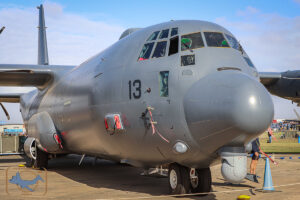
Recently delivered RNZAF C-130J-30 from No.40 Squadron- Ryan Imeson
In the next four years the RNZAF will look to acquire long-range, uncrewed, remotely piloted aircraft to support land and maritime forces with improved and persistent intelligence, surveillance, and reconnaissance (ISR) over longer distances, including in the Pacific and Southern Ocean.
The NZDF see this as an important capability as it will provide a greater range and coverage of operational areas than what the crewed P-8A Poseidon can acheive.
The NZDF spokesperson stated that “crewed aircraft will remain in service but in some situations, particularly during long duration missions, it will be preferable to use uncrewed aircraft.”
Cost of the program is expected to be from between $100 million to $300 million (NZD) over the next four years. From 2029 Additional long-range, uncrewed, remotely piloted aircraft will be procured to support land and maritime forces with improved and persistent ISR capabilities.
It remains to seen which platform is preferred preference for the RNZAF but minister Collins stated that they intend to draw closer to their closest ally in Australia, “This DCP outlines how decisions will result in New Zealand being more integrated with our ally Australia, making both countries stronger together.”
As we’ve seen with the RNZAF recently introducing the C-130J Hercules and P-8 Poseidon, two platforms already in service with the Royal Australian Air Force (RAAF), it is key for RNZAF to gain as much interoperability and commonality with its neighbour as it can.
Wether the NZDF and NZ Government is thinking about purchasing the MQ-4C Triton to fulfil the UAS long endurance capability, the general public will have to await offical confirmation from the NZDF but its certainly a platform RNZAF have looked into, and we must state its only a hypothesis that we mention as to why its a good fit for NZDF operations.
RAAF No.9 Squadron which operate the MQ-4C from RAAF Base Tindal have recently begun flying the Triton as apart of its Initial Operating Capability testing phase for the aircraft, and there will be two more Tritons delivered from Northrop Grumman to the RAAF next month again being based at Tindal.
If New Zealand were to acquire the Triton it would certainly gain a wealth of knowledge from their Australian airforce counterparts in how to operate and integrate the aircraft, especially when working together to monitor the maritime approaches in Australia and the Pacific Islands to the North of New Zealand.
The flyaway unit cost of a MQ-4C Triton is $141.8 million.
Another program that will be expedited will be the procurement of a modern passenger aircraft for the transportation of people and equipment.
The aircraft will replace the RNZAF’s aging fleet of two Boeing 757-200’s currently in service with No.40 Squadron at Whenuapai.
The 757’s are essential to supporting operations not only in the Pacific but all over the world, they were purchased second hand in the early 2000’s, and are reaching the end of their economic life, resulting in increasing costs, reliability issues, and extended maintenance periods.
The 757’s carry out a multitude of missions from transporting military personnel, equipment, and freight to support operations and deployments over long distances.
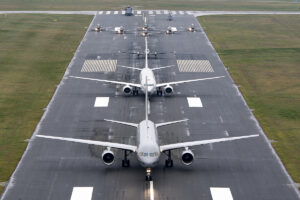
Air to ground and air to air imagery from the Wigram Skies event celebrating 100 years of military aviation in New Zealand- NZDF
They are also used to support New Zealand’s presence in Antarctica, evacuate New Zealanders from conflict and disaster areas, and carry civilians and Ministers for trade, diplomatic, and consular missions.
As a dedicated government aircraft, they can operate at short notice and at the direction of the Government, to areas where commercial airlines and other aircraft do not operate with a range of around 7,000 kilometres.
A possible replacement is another aircraft a variant that is in service with the RNZAF, being the Boeing 737-8MAX BBJ, two of which are also in service with RAAF No.34 Squadron. The 738 Max has a non stop range of around 12,000 kilometres. Again it has to be announced as to what aircraft will replace the two 757’s but most likely it will be a swap for swap arrangement with two or more aircraft purchased.
Cost of the program has been indicated to be around $600 million to $1billion, it cost the RAAF around $450 million for the two 737 MAX 8 aircraft to be bought outright as it is a cheaper option than to lease aircraft to fulfil the role.

Possible replacement for the RNZAF 757-200 could be the Boeing 737-8 MAX BBJ like this example currently in service with RAAF No.34 Squadron- Gareth Ruhe
The ageing SH-2(I) Super Seasprite will also be replaced in the near future with the procurement of a fleet of helicopters with a key for the aircraft to be able to operate from the Royal New Zealand Navy Navy ships.
The NZDF’s current SH-2G(I) Super Seasprite maritime helicopters, which can operate from the Navy’s frigates, offshore patrol vessels, the fleet tanker, and multi-role vessel, were purchased second-hand and are all reaching the end of their life.
NZDF stated that it was important for the maritime helicopters form a core part of the RNZN frigates capability to project power as they increase the platform’s defensive and offensive abilities. They also extend the frigates’ surveillance range, overall weapon capability, and also have the ability to support non-combat tasks like humanitarian assistance and disaster relief roles.
These helicopters can also be used on other naval vessels, increasing their surveillance capability, potentially providing offensive combat capability and supporting transporting land forces from ship to shore, and in support of other government agencies.
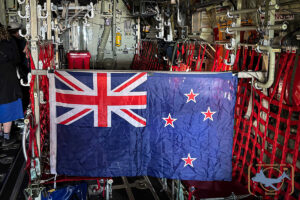 The estimate given by NZDF is $2 billion plus, more than likely the MH-60R Romeo which can operate from ANZAC class frigates and can perform a variety of roles will be hotly favoured by the NZDF as to again keep commonality with its allies and partners.
The estimate given by NZDF is $2 billion plus, more than likely the MH-60R Romeo which can operate from ANZAC class frigates and can perform a variety of roles will be hotly favoured by the NZDF as to again keep commonality with its allies and partners.
A wealth of experience can be attained working closely along with Australian Navy counterparts which already operate the MH-60R from HMAS Albatross south of Sydney.
And with the Australian Army recently acquiring the UH-60M Blackhawk, the Seahawk/ Blackhawk footprint in the South Pacific is only getting bigger, meaning that there is more supply and maintenance chains being established which the NZDF will be able to link in with.
A considerable amount of upgrades will be undertaken by the RNZAF from 2029 and they include,
Upgrades will be undertaken as required on the new C-130J-30 Hercules aircraft.
P-8A Poseidon aircraft upgrade to fully retain the operational capability and interoperability with partners of the P-8A Poseidon maritime patrol aircraft, systems, and equipment upgrades will be installed as they become available. These upgrades will occur throughout the life of the aircraft and were planned for at the time of purchase of the fleet.

Arrival of the first P-8A Poseidon 4801 to RNZAF Base Ohakea, New Zealand- NZDF
Utility helicopter fleet will be closely looked at with the make-up of the NZDF’s fleet NH-90’s and A-109’s will be considered, with the possibility of increasing numbers, also a mid-life upgrade of current aircraft, and/or replacing with different aircraft.
Minister Collins went on to state that the NZDF needed to move forward with the threats faced today and into the future and the NZDF being able to be innovative moving forward.
“Investment in our nation’s security must be enduring. These are significant investments of vital importance, and we can’t afford to get it wrong.
To be successful, Defence will need to be innovative and consider new ways of delivering and operating capabilities, while the Government will need to play its part and make significant financial decisions over the next 15 years.
All of this is essential to prepare for challenges that we as a country and as a region face now, and into the future.”
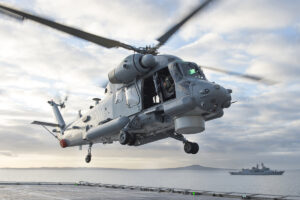
SH-2(I) Super Seasprite takes off from HMNZS Canterbury- NZDF
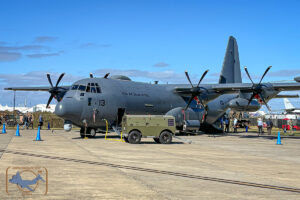
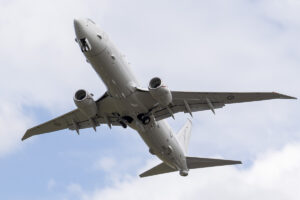
Jaryd Stock is based in Sydney Australia. He has been a die-hard aviation enthusiast from a young age when he was chauffeured around by his father to various airshows and airports around Australia. At his first Airshow he witnessed the awesomeness of a General Dynamics F-111C and immediately fell in love with aviation.
Jaryd picked up a camera at a young age and has never looked back. He now combines photography and writing to highlight “Downunder” aviation; especially U.S. DoD units. Jaryd uses Nikon cameras and lenses.

